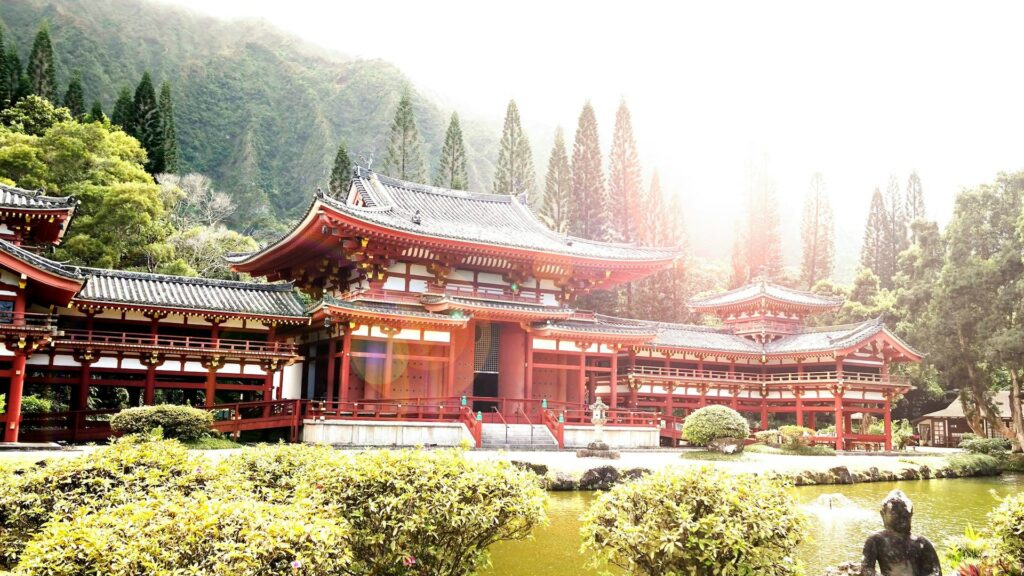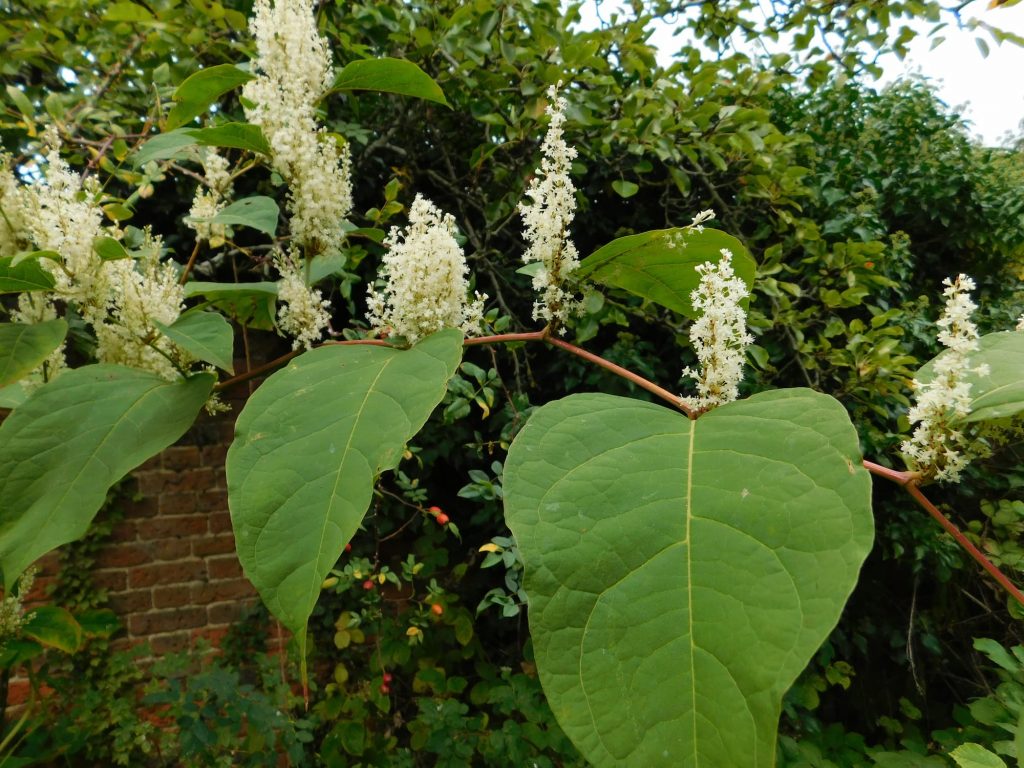Japanese Knotweed History
Japanese Knotweed, also known as Reynoutria japonica, is a highly invasive plant species that has caused headaches for homeowners and landscapers alike. Despite its negative reputation, the plant has a fascinating history that spans continents and centuries.
The plant is native to Japan, where it has been used for centuries in traditional medicine and as a food source. In the late 19th century, it was introduced to Europe and North America as an ornamental plant. Its attractive bamboo-like appearance and hardiness made it a popular choice for gardens, parks, and even railway embankments.
However, it wasn’t long before the plant’s invasive nature became clear. Japanese Knotweed has the ability to outcompete native plants, and it’s deep highly developed rhizome systems that can be troublesome. In the United Kingdom, the plant is considered one of the most invasive species and has been included on the country’s “Wildlife and Countryside Act 1981” list of prohibited invasive non-native plants.
Despite its negative impact, some scientists have suggested that Japanese Knotweed could have potential uses in the future. Research has shown that the plant has anti-inflammatory and antioxidant properties, and it may have potential as a biofuel source. It’s also a valuable food source for wildlife.

Japanese Knotweed’s ability to out-compete native plant species
Japanese Knotweed has a number of characteristics that enable it to outcompete native plants for resources. one of the reasons why it outcompetes everything is its ability to fix nitrogen. The best our native flora can do is Willow at about 33% – Japanese Knotweed is about 90%. This is the real reason why it outcompetes all our native flora by miles. The other main ways it does this is through its rapid growth rate and ability to spread quickly through its extensive underground rhizome system, which can extend up to 20 feet from the parent plant. This allows it to quickly colonise new areas and outcompete native plants for sunlight, water, and nutrients.
Another characteristic that contributes to its invasive nature is its ability to tolerate a wide range of environmental conditions. Japanese Knotweed can grow in a variety of soil types and can tolerate both wet and dry conditions, making it well-suited to colonise a wide range of habitats. It can also tolerate a wide range of temperatures, and it can grow in full sun or partial shade, which allows it to grow in a variety of different environments.
The plant also has an ability to re-sprout from the rhizomes even if the above-ground portion of the plant has been removed, making it difficult to control and eradicate. This also means that even small fragments of the rhizome can develop into new plants, which can lead to the spread of the species.
In addition to outcompeting native plants for resources, Japanese Knotweed can also alter the physical structure of habitats, making it difficult for native plant species to establish. Its dense thickets can shade out native understory plants, and it’s deep roots can break up soil and cause erosion. This can make it difficult for native plant species to establish, and it can lead to changes in ecosystem function and a decline in biodiversity.
Japanese Knotweed’s ability to outcompete native plants is due to its rapid growth rate, ability to spread quickly, tolerance to a wide range of environmental conditions and its ability to resprout from rhizomes. It’s important to be aware of the potential impact of non-native plant species before introducing them to our gardens, parks, and wild spaces.

Japanese Knotweed and other Invasive Plants
Japanese Knotweed is not alone in its invasive nature. In fact, many non-native plant species have been introduced to new regions and have caused significant ecological damage. These invasive plants can outcompete native species for resources such as sunlight, water, and nutrients, leading to a decline in biodiversity and changes in ecosystem function.
One example of a highly invasive plant species is the Giant Hogweed (Heracleum mantegazzianum). This plant, which is native to the Caucasus region of Eurasia, was introduced to Europe and North America as an ornamental garden plant. It can grow up to 14 feet tall and its sap can cause severe irritation to skin, on contact with skin it can cause such severe blistering as to require hospitalisation sometimes due to reaction of sap with sunlight on skin.
Giant Hogweed is on the Wildlife and Countryside Act (1981) – as is Japanese Knotweed. The Environment Agency consider it the second most undesirable non-native after Japanese Knotweed.
Everything about Giant Hogweed is massive, but that in itself is not a problem – what is its highly invasive nature – the flood risk presented by it overtaking or outcompeting native flora within the riparian environment (rivers, streams etc) the flood risk being when the massive above ground material dies back down in the winter and can fall into the water. Also the massive number of seeds produced about 50, 000 a season. There is not only the Wildlife and Countryside Act (1981) but also the Wildlife and Environment (Scotland) Act 2011.
Another example is the Himalayan Balsam which is a massive problem along water systems and is on the Wildlife and Countryside Act (1981).
Ultimately, it’s important to be aware of the potential impact of non-native plant species before introducing them to our gardens, parks, and wild spaces. By understanding the risks and taking action to control invasive plants, we can help protect our native biodiversity and preserve the ecological integrity of our natural areas.
It is not advisable to try to remove Japanese Knotweed yourself
Many types of knotweed can easily be mistaken by the untrained eye and has the potential to spread when it’s dug up
Japanese Knotweed in the UK
In the United Kingdom, there are several scientific organisations and government agencies that provide resources and information on Japanese Knotweed and other invasive plant species.
The Centre for Agriculture and Bioscience International (CABI) is a scientific organisation that conducts research on invasive species, including Japanese Knotweed. They provide information on the biology, distribution, and control of the plant, as well as guidelines for managing infestations.
The UK’s non-native species secretariat (NNSS) is the UK government’s focal point for policy and action on non-native species. They provide information on invasive non-native species including Japanese Knotweed, their impacts and guidance on how to manage and control them.
The Environment Agency is another government agency that provides information on Japanese Knotweed and other invasive plant species. They provide guidance on how to identify and control the plant, as well as information on the legal requirements for managing infestations.
Conclusion
In conclusion, Japanese Knotweed may be a nuisance to homeowners and landscapers, but its history is a colourful one. It’s a reminder that the plants we choose to introduce to our environment can have far-reaching consequences. As always, it’s important to consider the potential impact of non-native plants before introducing them to our gardens, parks, and wild spaces.
Footnotes
Sources
Centre for Agriculture and Bioscience International (CABI): https://www.cabi.org/
Non-Native Species Secretariat (NNSS): https://www.nonnativespecies.org/
Environment Agency: https://www.gov.uk/government/organisations/environment-agency
It’s important to note that the control and management of invasive species can be a complex and challenging task, as such, it’s advisable to consult with experts and professional services when dealing with invasive plants like Japanese Knotweed.
Check for Invasive Weeds
Contact us to discuss arranging a site visit report to check your site for invasive weeds likely to give rise to problems.
Book an appointment for a quick call









